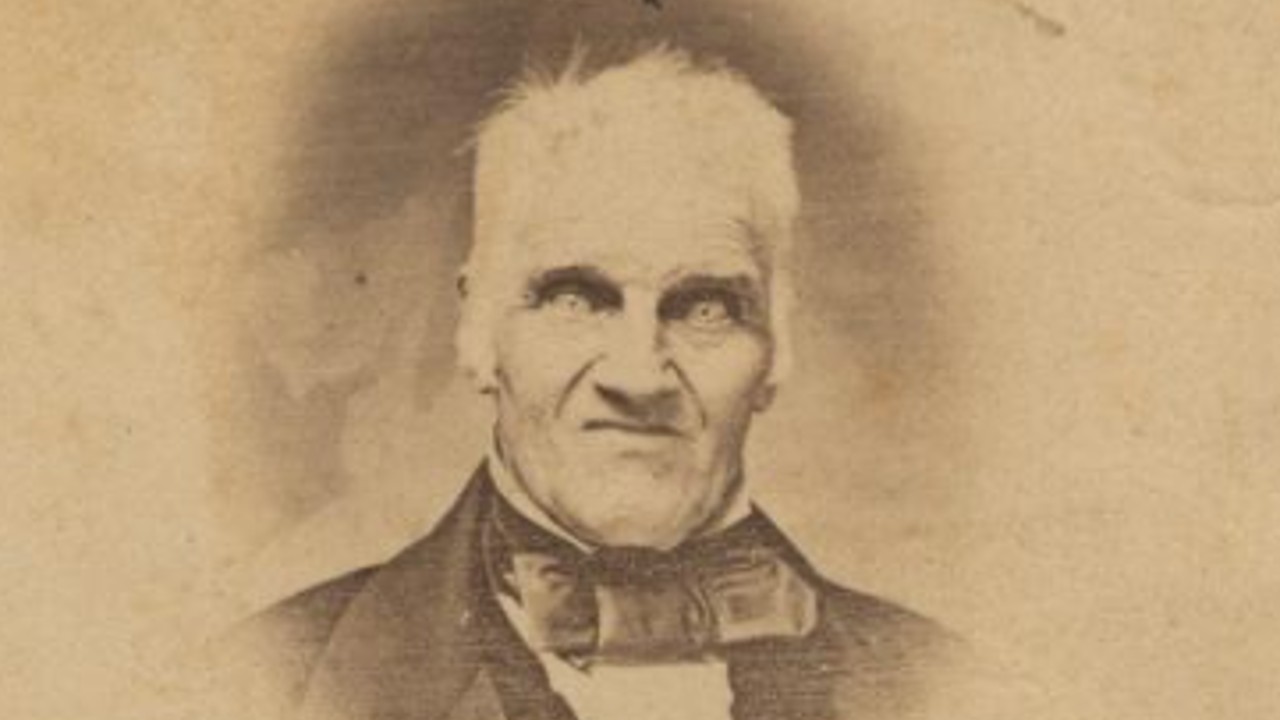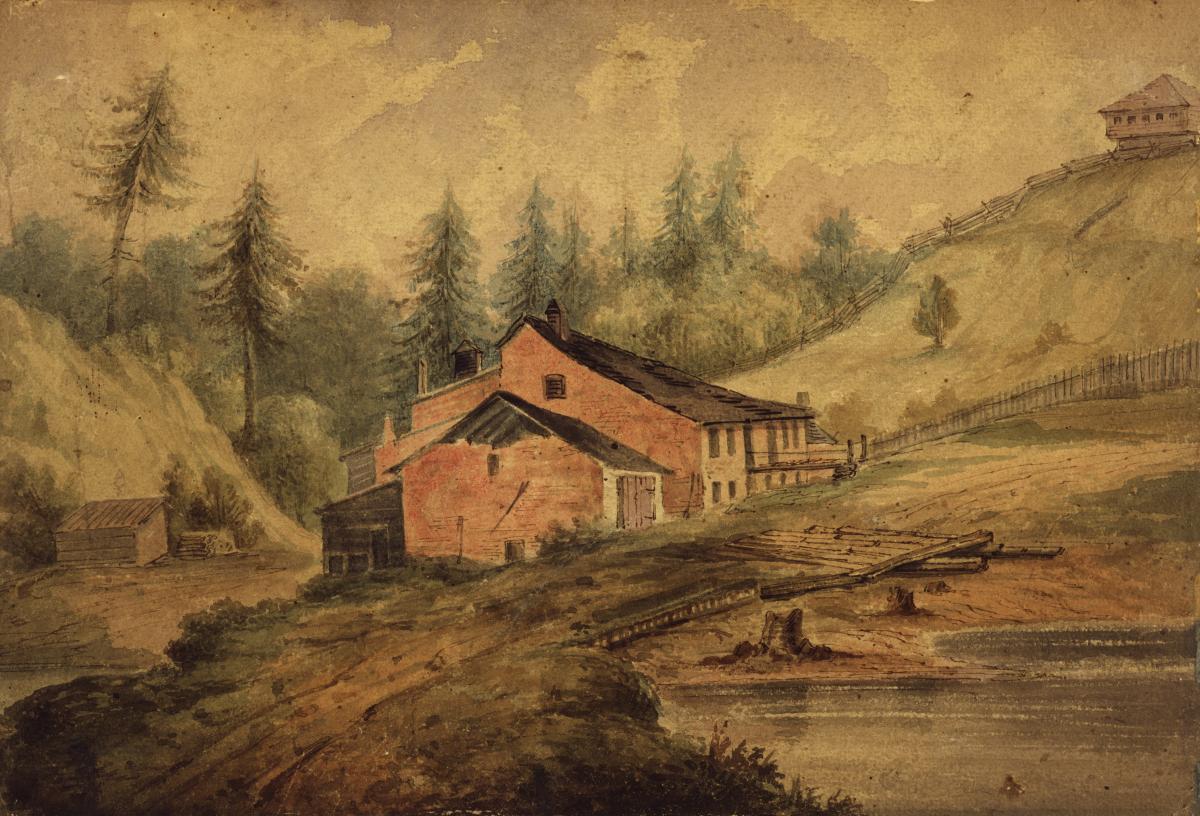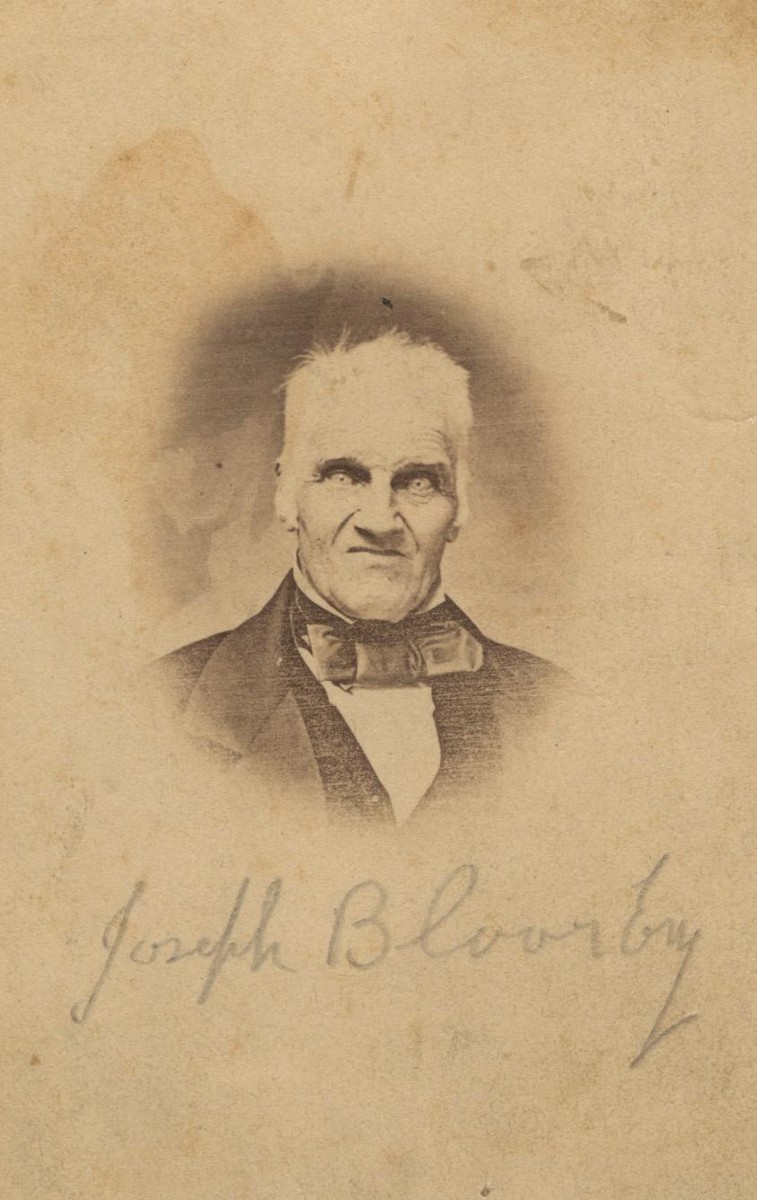The story behind Toronto’s most chilling portrait
Joseph Bloore watched the Town of York become the City of Toronto. Now his eyes watch you from this photograph.

It’s an infamous photo, one of the most striking images in the archives. A picture so unsettling it regularly makes the rounds on social media, going viral as people realize what the man who leant his name to Bloor St. actually looked like.
But even if you’ve seen this photo before, you probably don’t know much about the man in it. So I thought I’d share the story of Joseph Bloore and the role he played in the history of our city.
He was born in England in the late 1700s, but as a young man he set out to build a new life. He sailed across the ocean, bound for the Canadian colonies. And it was here in Toronto that he settled.
He arrived in 1818, back when our city was still the muddy little town of York. It had been founded by the British just two decades earlier — on land that had already been home to First Nations and their ancestors for thousands of years. It was still very much a frontier town back then. A rough place. And sometimes, a very drunk one.
In its first few decades, York witnessed drunken brawls, street fights, even murders. There were sex scandals and duels and riots. Toronto’s first death sentence was handed down to a man who drunkenly forged a shilling to buy some whisky. He was hanged outside the jail on King St.
Joseph Bloore saw all that boozy chaos as an opportunity. He opened a tavern. The Farmer’s Arms stood right in the middle of town — on the market square, near the spot where today’s St. Lawrence Market still stands 200 years later.
It was a notorious neighbourhood. The area was known as the Devil’s Half Acre — a place where farmers coming to market could get trashed while they were in town. It seems to have been, as Jordan St. John put it in his Lost Breweries Of Toronto book, “a centre of vice.”
Bloore made money off that vice. Lots of it. And soon, he’d be making even more. He used his profits from the tavern to open his very own brewery. Bloore’s Brewery would stand in the Rosedale Valley. (It was well outside town back then, but now that spot is right near Sherbourne subway station.)
Bloore had a big impact on the valley, changing its landscape. He built a dam on Castle Frank Brook to power his machinery, creating a big pond in the process. Bloore’s Pond stretched nearly all the way to Yonge St. in the spring, a popular spot for swimming in the summer and skating in the winter.
But brewing was hard work. It was quite dangerous back then — more than one Toronto brewer was killed doing it — and Bloore had to get his heavy kegs up the steep and muddy slopes of the ravine then all the way down into town.

He also, however, had very good timing. York was booming. As the town officially became the City of Toronto, the population was skyrocketing. And lots of the new arrivals wanted to get drunk. New taverns were opening all the time, dozens of them, one for every 125 residents or so. And all those taverns needed beer.
Joseph Bloore got rich supplying them. So rich, in fact, he was soon able to start up a whole new income stream. He entered into a partnership with William Botsford Jarvis — the town’s sheriff, who would soon be hailed as a hero for helping crush the Upper Canada Rebellion.
Together, Bloore and Jarvis began buying enough land to create their own village not far from the brewery. It almost became known as Blooreville, but would get the name Yorkville instead. It would eventually get swallowed up by the growing city, a neighbourhood that would one day become famous for its 1960s hippie scene and today’s swanky fashion boutiques.
But even without Blooreville, the brewer’s name would live on.
He’d built a house on the big road just up the hill from his brewery. The street had many names over the years: the First Concession Road, Tollgate Road, St. Paul's Road, Sydenham Road…. But it was best known as the way to get to the famous brewer’s house, so that’s the name that stuck.
Two centuries later, we still call it Bloor St. — though we’ve dropped the “e” — and that’s not the only trace of Joseph Bloore you can find in Toronto today. There’s a plaque and marble tablet erected near the spot where his house once stood. And, of course, there’s the disturbing photographic portrait he left behind.

It must be one of the earliest photographs ever taken in Toronto — since we know the very first photos of the city were snapped just six years before Bloore died.
Maybe that’s why it turned out so poorly, why his eyes are so unsettling, why his hair is so dishevelled, why he seems to sneer at us from beyond the grave like some undead creature unleashed from the depths of hell itself....
This is a cross-post from Adam Bunch’s newsletter, The Toronto History Weekly. Click here to read and subscribe.
Code and markup by Kyle Duncan. ©Torontoverse, 2023